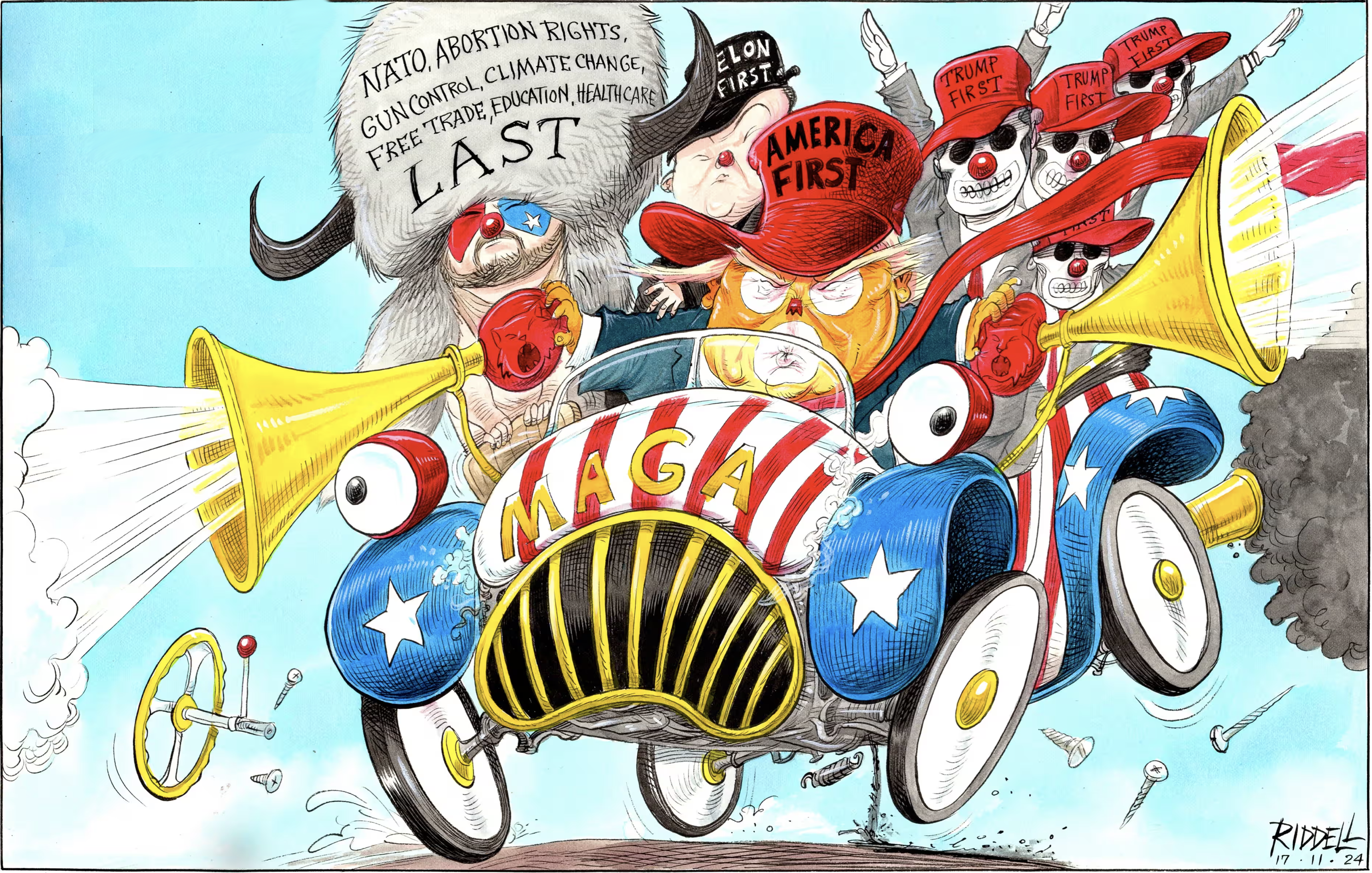In the grand theater that is American politics, there emerged a recurring theme: the Republicans Declared “Government is Broken!” then would seize the reins of power, steer the economy into a ditch, while giving their corporate billionaire buddies huge tax breaks, and then, with feigned innocence, declare, “See? We were right.” A Self-executing prophecy. Enter the Democrats, stage left, armed with mops and buckets and a desire for “good governance”, go about cleaning up the mess. Let’s look back on this economic “double- speak”, from 1980 through the Trump sequel that nobody asked for.
Reaganomics—Trickle-Down or Trickle-On? – The 1980s ushered in President Ronald Reagan, who championed “trickle-down economics,” a delightful fairy tale where showering tax cuts upon the wealthy was supposed to benefit everyone. Spoiler alert: it didn’t. While the rich luxuriated in their windfalls, income inequality widened, and the national debt tripled. The economy did grow, but much like a soufflé—impressive on the surface, hollow underneath.
Read My Lips, No New Competence – George H.W. Bush, inheriting Reagan’s deficit and adding his own flavor of economic malaise. Despite a brief flirtation with fiscal responsibility by raising taxes (breaking his own “no new taxes” pledge), the economy slipped into recession, and Bush Sr. slipped out of office.
Enter Bill Clinton, who, despite his Neo-Liberal policies and personal indiscretions, managed to preside over an era of economic prosperity. All be it, he presided over massive off-shoring of jobs to Mexico and China, slash the social safety net for millions of Americans and deregulated the financial markets the would eventually lead to the “great recession”, he raised taxes on the wealthy and managed to balance the budget, achieved a surplus, and oversaw robust GDP growth. The unemployment rate dropped from 7.3% to 4.2%, and the economy added 18.6 million jobs. The rich still got richer, but at least the rest of America got a small piece of the pie.
Mission Not Accomplished! – George W. Bush took the stage and promptly passed massive tax cuts favoring the wealthy, engaged in costly wars, and deregulated the financial sector. The result? The Great Recession of 2008—the worst economic downturn since the Great Depression. Job losses mounted, the housing market collapsed, and the financial system teetered on the brink. “Mission Accomplished,” indeed.
“Yes, We Can”… fix this – Barack Obama inherited an economy in free-fall. Through stimulus measures and financial reforms, the economy slowly recovered. The unemployment rate fell from 10% to 4.7%, and the stock market rebounded. While not without faults, the administration’s efforts stabilized the economy and set the stage for a decade of growth.
Donald Trump entered with promises of economic greatness. He enacted tax cuts that disproportionately benefited corporations and the wealthy, ballooning the deficit. Trade wars ensued, manufacturing jobs didn’t return as promised, and income inequality widened. The economy did see growth, but much of it was built on the successes of the Obama administration, while Trump’s fiscal policies were chaotic at best.
Joe Biden took office amidst a pandemic and economic turmoil. Through stimulus packages and infrastructure investments, the economy saw a resurgence. Unemployment dropped, and GDP growth resumed. However, challenges like greed-flation (where companies used the excuse of supply chain issues to gouge consumers) and collusion among the oil industry combined with a bird flu outbreak that effected egg prices remained, giving the right wing the talking points they needed.
Against all odds and perhaps reason, Donald Trump returned to the Oval Office. His second term began with a flurry of executive orders, tariffs aimed at our allies, dismantling the watch-dog agencies, and firing tens of thousands of federal workers . The stock market, initially buoyant on the belief that more tax cuts were imminent, began a downward trend. Inflation remains a significant issue, gas and grocery prices, especially eggs, continuing to soar. Unemployment which stood at 4.1%, begins to tick higher, and the overall economic outlook looks like a train wreck waiting to happen.
This pattern is unmistakable: Republican administrations often implement tax cuts favoring the affluent and increase military spending, leading to higher deficits and economic instability. Subsequently, Democratic administrations are left to navigate the fallout, striving to implement policies aimed at broader economic recovery and fiscal responsibility. The data underscores this trend: since World War II, GDP growth has averaged 4.1% under Democratic presidents versus 2.5% under Republicans.
So, the next time the GOP proclaims that “government is the problem,” one might consider who has been at the helm during economic downturns and who has been tasked with the cleanup. Perhaps it’s time to break this cycle and advocate for governance that prioritizes the many over the privileged few.
